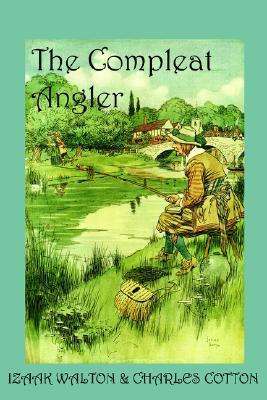Chapter XX — The Compleat Angler
byChapter XX – The Compleat Angler draws its wisdom from Piscator’s reflections on the design and management of fish-ponds, inspired by Doctor Lebault’s detailed advice from “Maison Rustique.” Emphasis is placed on building a durable pond structure that withstands environmental wear while sustaining fish life. Reinforcing the pond head with oak or elm that’s been properly scorched helps guard against rot, significantly extending its lifespan. Between these beams, smaller pieces of wood and tightly packed soil create a robust foundation. The overall shape of the pond should direct water naturally, while a sluice or floodgate ensures that excess water drains safely without damaging the walls. Proper construction also improves the pond’s long-term productivity. When the pond is carefully engineered, not only does it become a more beautiful part of the landscape, but it also provides an ideal home for fish to breed, grow, and live healthily across the seasons.
Aside from structure, the surrounding environment plays a crucial role in pond success. Doctor Lebault encourages planting willows near the water for shade and scenic charm, as long as their presence doesn’t dominate. Excessive trees, particularly those prone to dropping leaves, can lead to rot, which degrades water quality and harms the fish. Clear water is essential, especially if the goal is to raise fish like carp or tench that are prized for flavor. A natural stream or frequent rain helps refresh the water, enriching it with oxygen and maintaining cleanliness. Shallow zones, gravel beds, and protected corners all contribute to a diverse aquatic habitat. These variations mimic natural water bodies, offering shelter and comfort for fish. The placement and care of each element shape the balance and vitality of the pond.
Lebault advises caretakers to dry the pond periodically, especially after harvest. This drying allows weeds to be cleared and grass to regrow, a food source carps find highly palatable. Periodic drying also reduces the buildup of harmful silt and deters parasites that could otherwise affect fish health. Maintaining a schedule of such renewals enhances productivity in future seasons. Attention must also be given to pond inhabitants outside of fish—frogs and ducks, for example, are known to consume fish spawn. While Lebault does recommend controlling their population, he also humorously suggests that frogs may be eaten instead. Ducks, on the other hand, must be discouraged altogether, as they frequently disturb spawning grounds and muddy the water during their activity.
Feeding fish is another subject of thoughtful planning. Piscator explains that fish thrive on table scraps and garden refuse if managed properly. The balance lies in offering nourishment without creating water pollution. Fish are most active at dawn and dusk, making these ideal times to feed. Observing their feeding habits helps caretakers determine which species are thriving and whether they need additional support. Gentle and predictable human activity fosters familiarity, allowing fish to remain stress-free and responsive. Avoiding loud noises, especially gunfire, is essential, as sound can scatter fish and interrupt their natural patterns. The advice is practical and drawn from years of observation, not just theory.
Fish-ponds are described not merely as food sources, but as reflections of human stewardship and harmony with nature. Lebault’s method teaches patience and reward through slow cultivation and deliberate action. Piscator upholds these principles, encouraging readers to view angling and fish-keeping as extensions of a contemplative lifestyle. Beyond practical concerns, the pond represents a peaceful domain where order, care, and quiet labor yield abundance. It becomes a place where nature and humanity meet gently—an echo of the larger themes that run through “The Compleat Angler.” The care of a pond is not simply for consumption, but for the joy of watching life thrive under gentle guidance.
This chapter, with its blend of agricultural advice and gentle philosophy, serves as a reminder that contentment often arises from simple, grounded labors. Piscator’s inclusion of Doctor Lebault’s wisdom deepens the reader’s understanding of angling as more than a sport—it is an art form requiring care for land, water, and life itself. When managed thoughtfully, even a still pond becomes a teacher. Its balance of stillness and vitality mirrors the angler’s ideal state of mind: calm, attentive, and full of quiet appreciation. Through steady attention and modest interventions, harmony can be shaped and sustained, just as a well-built pond reflects the quiet diligence of its keeper.


